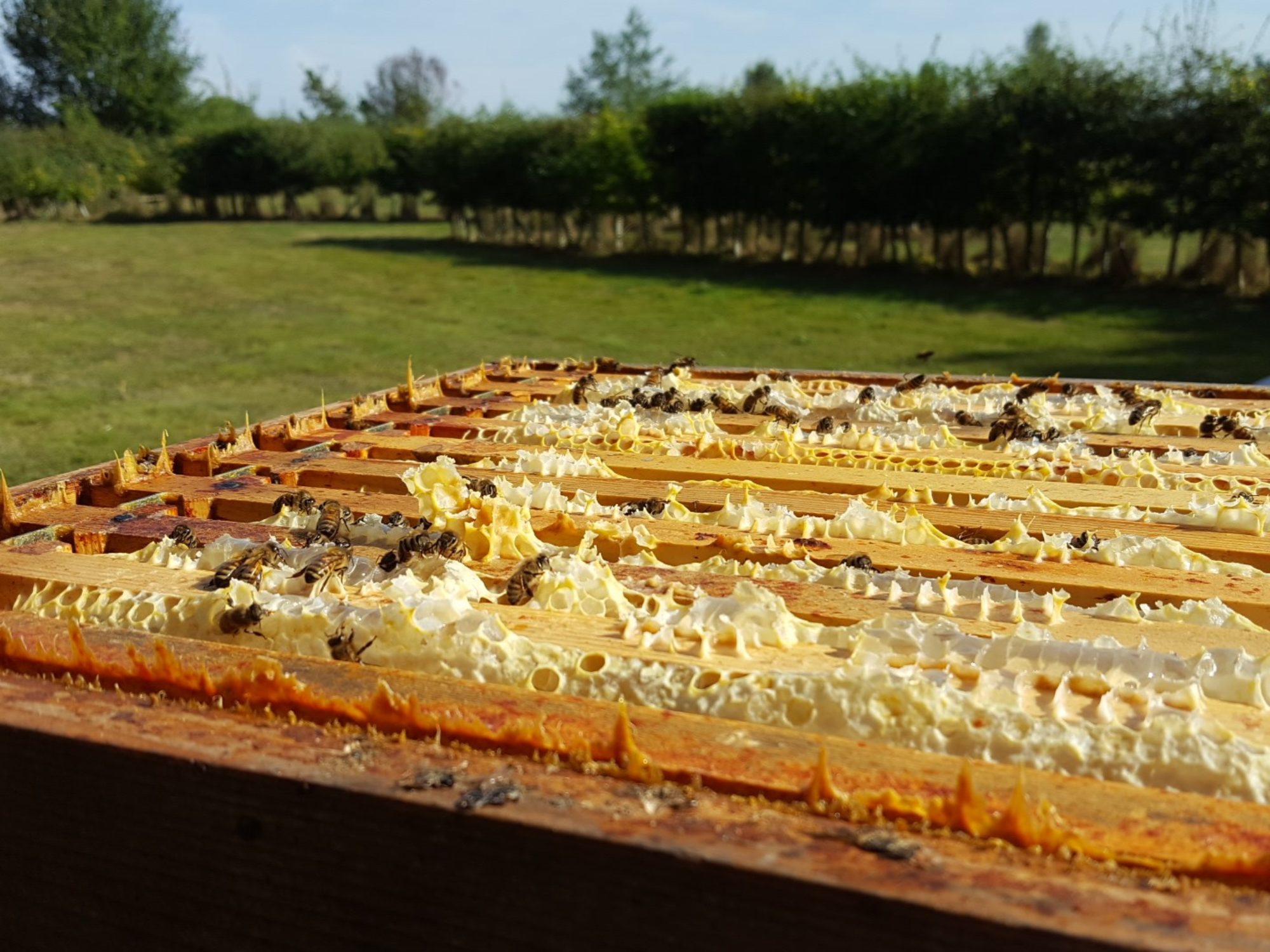I’ve been working on raising queens, so far only hatched, unplanned, queen cells. I’ve got a Apidea hive, and a mating hive that I created myself using frames similar to Apidea frames. Well Apideas are not cheap, and not big enough to be left alone for long without support feeding. My first attempt at making my own was pretty successful, but it had one of the issues that the Apidea had also, trying to load it with worker bees was not easy. Also it was multi chamber, with easy mini-colony only being big enough to hold over for a few weeks. Will I continue to use them? Well, yes, apart from anything else the project I’m about to outline is not proven.
What is a Super queen mating hive?
Put simply, the idea is to use a national super as a mating hive. The simplicity of taking a standard piece of hiveware, with standard frames with foundation; where the bees can be transferred easily by frame swapping from an active colony’s super.
Now using a whole super for one mating hive is a bit excessive, as as with my first DIY job, I split it into multiple parts. Given I wanted it to have it be a bit more self sustaining than the Apidea size model, I figured two frames would be too few, so three or more was the plan. A super fits 12 frames, but I needed a bit of space for walls between each compartment and for manipulation. Nine frames left a lot of space for brace comb, so I decided on having a 4, 3, 4 setup; having the extra advantage of trialling the different number of frames. The sections needed to be kept separate so the dividers needed to come up above the frames and to be affixed to the bottom.
The sections needed to be open-able independently to prevent the individual colonies fighting with each other on inspection. They also have a hole in the crown board for when I get round to making a feeder to support them.
Then finally, I decided they should exit the hive separately, two to the front, with their own ‘alighting board’ to land on ahead of entering through a small defend-able entrance.
What’s next?
Well I’m going to
- cut a hole in the far side for the centre chamber
- paint the entrances different colours to help prevent drifting.
- cut out the floor of each chamber and put mesh under them so they will have a varroa floor, and ventilation.
- make a roof for it
- make a stand for it
- add foundation to the frames that don’t have it.




